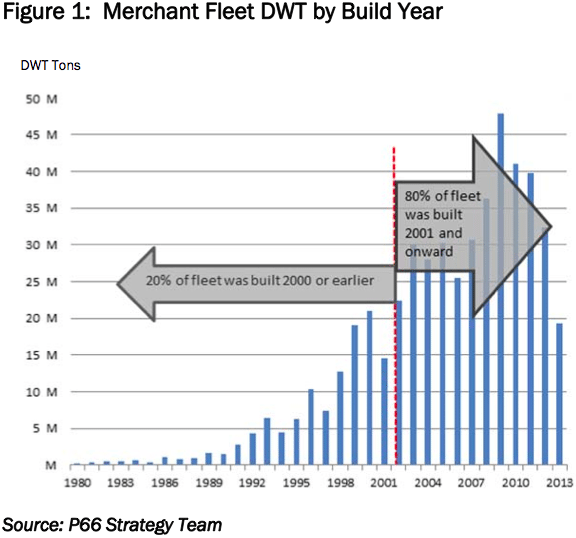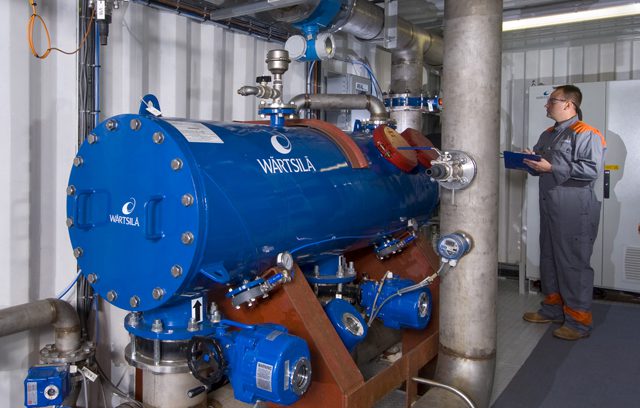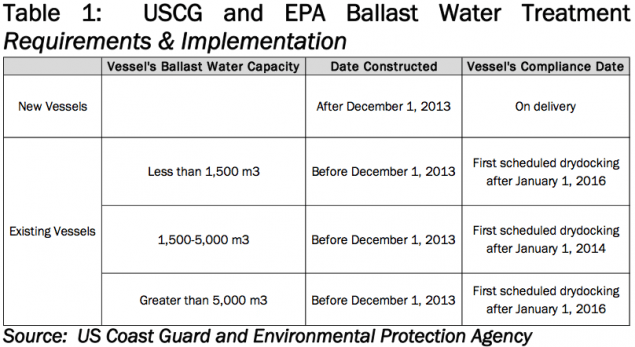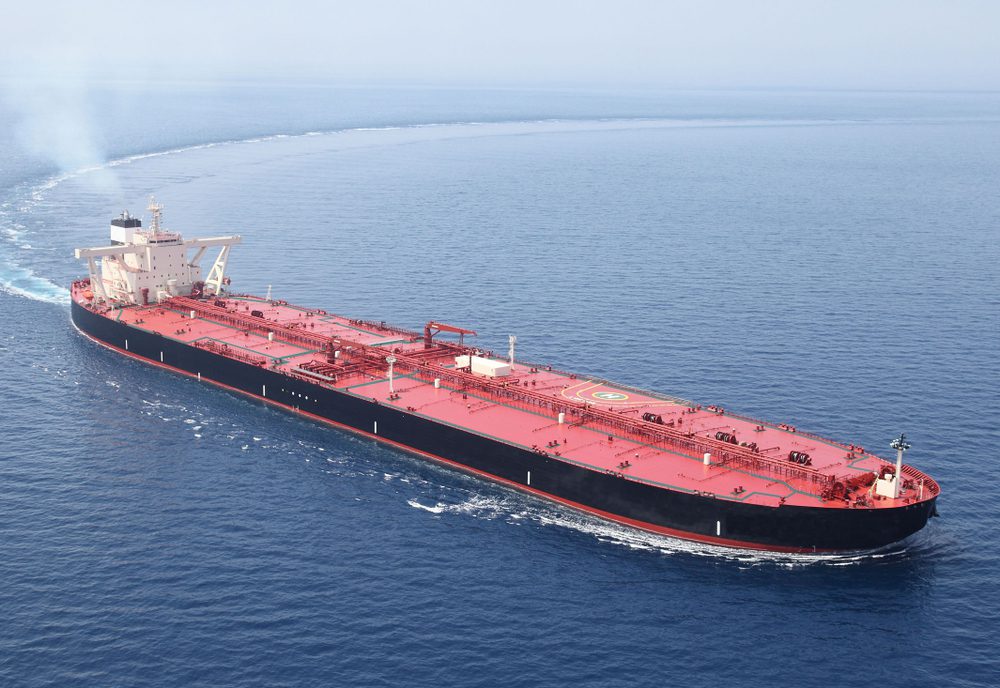The regulation requires ships entering US waters to perform a ballast water exchange at least 200 miles offshore. This is referred to as a D1 requirement. A stricter US requirement is the D2 that calls for the installation and use of Ballast Water Treatment Systems (BWTS). Any ship built after December 1, 2013 will be required to have D2 equipment on board, while prior built ships will be required to install BWTS equipment no later than first dry docking after January 1, 2016. Additionally, the US Environmental Protection Agency issued the Vessel General Permit (VGP) regulating discharges from commercial vessels, including ballast water, to protect the nation’s water from ship-borne pollutants and invasive species (Table 1). Although the VGP generally aligns with the US Coast Guard ballast water requirements, it contains some additional requirements concerning the functionality, calibration, and sampling processes involved with the BWTS.
Price estimates for BWTS systems range from US $500,000 to US $3 million, rising in line with the ship’s size. Technical advances are supporting lower prices.
Owners seem to have adopted the “wait and see” approach in the absence of a specific implementation date. This could result in extensions or waivers as it seems unlikely that the global fleet could reach compliance in one year.
In the current market environment, an owner’s willingness and financial capacity to invest in new systems is debatable. Some owners will likely scrap their vessels rather than undergo the special survey and install costly equipment.
This could provide a limited boost to trimming the trading fleet, as owners of 15 year old vessels will see additional costs on the horizon.
However, as illustrated in Figure 1, the bulk of the merchant fleet has been delivered since 2000. This implies that even if scrapping were to accelerate on ships 15-years and older, a severe acceleration would be needed to significantly reduce tonnage due to BWTS regulations. Ultimately, the pace of scrapping relating to BWTS will be directed by the time frame of ratification or enforcement.
There are three types of technologies that are developing around BWTS: mechanical, physical and chemical, which have various options and are briefly described below.
Mechanical can use a filtration system to remove sentiment and particles during ballast water intake. A cyclonic system separates solid particles from the water with centrifugal force. However, with this system, only matter with a specific gravity above water will be removed. Electro-mechanical separation injects a flocculent that will attach to organisms and sediment. Magnetic separation and filtration is then used to remove the solid particles.

Physical disinfection has three options as well. Ultraviolet light can be used to break down cell membranes killing the organism or destroying its ability to reproduce. Effectiveness depends on ballast water turbidity (sediment concentration) as this could limit transmission. Cavitation/ultrasounds – venturi pipes or slit plates are used to generate cavitation bubbles. These high energy bubbles create hydrodynamic forces, ultrasonic oscillations, or high frequency noise, which kills organisms. Thirdly, de-oxygenation uses various methods to remove the dissolved oxygen in the ballast water and replace it with inactive gases, such as nitrogen or other inert gas. In addition to killing aerobic organisms this can help prevent corrosion if the oxygen content is maintained at the correct levels.
Chemical systems can use disinfecting biocides. These are pre-prepared disinfectants designed to be dosed into the ballast flow and kill the living organisms. Typical biocides include chlorine, chloride ions, chlorine dioxide, sodium hypochlorite and ozone. Second is electrolytic chlorination, applying an electrical current directly to the ballast water flow in an electrolytic chamber.
There are 28 unique systems alone in the above categories. However, none have been cleared by all governing bodies. Naturally there are differences between the systems for issues such as application installation, sizing flexibility, holding time, and power requirements to run effectively. Safety considerations are also an issue. The treatment technology also needs to take into consideration the actual ballast water. The organic content of ballast water varies regionally. Therefore threats posed to local eco systems can vary greatly, requiring varied treatment system capacities.
There are other issues to be considered. If a quick implementation would be required, it is unclear that global ship repair capacity would be adequate. This could be compounded by the current wait and see approach. Challenges will also surface from divergences in ballast systems, pumps and piping.
As 2014 is fast approaching and the tanker market remains pressured by tonnage supply and orderbooks in some sectors remain high, yet another factor impacting profits is on the horizon. Although this might not be the impetus required to significantly reduce tonnage, it could help nudge some owners in the right direction.
This Industry Note is provided by P66, based on research from the P66 Strategy Team with technical guidance from Minerva Marine Inc.

 Join The Club
Join The Club













